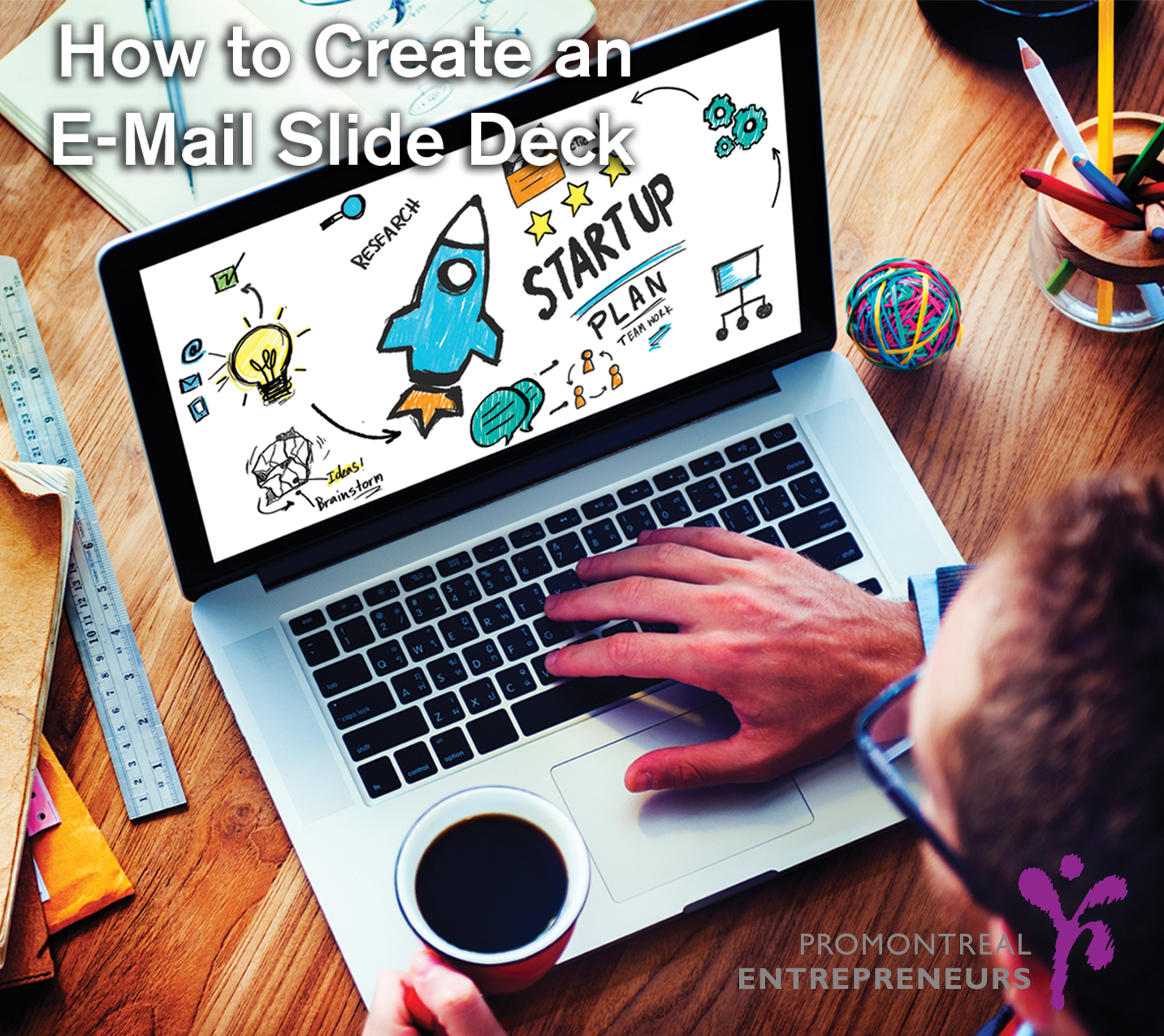 E-Mail communication and etiquette is an integral part of business practicality. As an entrepreneur you will have many slide decks to prepare and send by e-mail prior to an in-person meeting with investors. Though you may find the information in your numerous slide decks redundant and contemplate one deck for all occasions, don’t. While it may take more time to customize your slide decks, keep in mind that your potential investors will want information catered to their needs and interests at a given time. When sending a slide deck by e-mail to spark an investor’s interest, a few rules of thumb apply. Be concise, skimmable and to-the-point.
E-Mail communication and etiquette is an integral part of business practicality. As an entrepreneur you will have many slide decks to prepare and send by e-mail prior to an in-person meeting with investors. Though you may find the information in your numerous slide decks redundant and contemplate one deck for all occasions, don’t. While it may take more time to customize your slide decks, keep in mind that your potential investors will want information catered to their needs and interests at a given time. When sending a slide deck by e-mail to spark an investor’s interest, a few rules of thumb apply. Be concise, skimmable and to-the-point.
Here is how you should consider structuring your concise, skimmable and to the point slide deck:
- Problem Identification
At the very beginning the investor should know what the problem is. The way you articulate your problem is key. It should be specific, clear and easily comprehensible. This section should be building momentum for the introduction of your product or service as the solution.
Ex: Overweight people-66.7% of the US population refuse to step on the scale because their actual weight is too depressing, making it impossible to conceive how they can lose 20-40 pounds (the average an overweight American seeks to shed.) The issue is that voluntary weight loss without the feedback of a scale is essentially impossible.
- Solution/Your Product
Don’t attempt to complicate things by explaining all of your product’s features. Leave that to the slide deck for the in-person meeting. For an e-mail deck, focusing on the user experience is your best bet.
Ex: SOMA indexes the user’s starting weight at zero. It then simply records upward and downward movements of weight on a daily basis. Daily use of SOMA vs. regular scales is 87% vs. 14%.
- Team
If you have over five employees you do not have to introduce all of them. It is only important to mention the people heading the operations. Position, field of expertise, past accomplishments, alma mater (if applicable or useful) are what is necessary.
- Traction and Unit Economics
Even if you are in the early stages of your product development this section should be included. Your potential investor will not expect your business’s performance to be at par with that of a successful business, so there is not much to worry about in that aspect. What this section should do is show that people want your product. Areas you must address should be with regards to: the tested customer acquisition channels, the cost to acquire new customers, retention rate, customer engagement, etc. If you do not have much information you can provide some of your unit economics (How many customers you have, how much sign up per quarter, cost of goods sold, supplier, etc.)
- Market Size
The market you are competing in is one of the greatest influencers of an investor’s decision. Whether or not you are competing in a large or niche market can give the investor an idea of how much return they can expect from their investment. Market size, size of target market, and growth potential are the essentials.
- Competition
Even if you claim to be a first mover, you still have competition! Even if no one sells the same product mention potential substitutes or your indirect competition.
- Contact information
This is a given. Name, phone number with extension, and email, of all key business decision makers is to be included.
Your e-mail slide deck should not take more than two minutes for the investor to read! Aesthetically, ensure that your chosen colors are well selected and subtle. Remember that this is only to get an investor’s attention and to book an in-person meeting, not for them to invest. The key here is to focus on the facts that will attract investors to you, don’t worry too much about elaboration. That comes later!
 Email This Post
Email This Post


